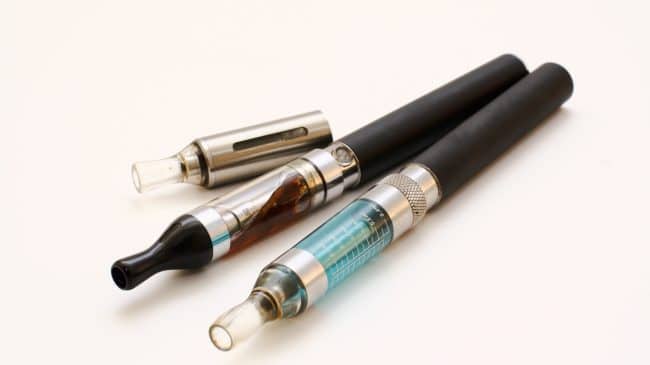Fifteen years ago, a Chinese pharmacist sparked a global innovation race to end smoking by inventing a safer, more appealing way for smokers to get the nicotine they desire without the smoke that may kill them–the modern day e-cigarette.
Thousands of companies are now creating jobs and wealth competing to make quitting cigarettes easier, cheaper and more enjoyable. But smokers trying to switch to vaping face a host of obstacles. FDA regulation threatens to wipe out most e-cigarette businesses in a matter of years. Cities and states are imposing tax hikes, flavor bans, and extending smoke-free laws to cover vaping.
Now there’s another threat to add to the tally, with vapers set to join the seemingly endless list of consumers and businesses bracing themselves for the impact of the Trump administration’s latest round of tariffs. E-cigarette devices imported from China are among the goods that have been slapped with duties of 25 percent. Since almost all the world’s e-cigarettes are made in China’s Guangdong province, current and potential vapers will face higher prices for choosing to quit smoking using e-cigarettes.
Politicians are familiar with so-called “sin taxes” levied on products such as cigarettes and alcohol. While ostensibly imposed to improve public health sin taxes are more often than not an easy way to boost revenue while avoiding even more unpopular tax hikes. Almost uniquely, the administration’s e-cigarette tariffs raise the farcical specter of virtue taxes, penalizing people for making healthier life choices.
It’s well-established that raising the price of cigarettes cuts the number of legal cigarettes sold. The same is doubly true for e-cigarettes. Vapers are more price-sensitive than smokers, with research showing a 10 percent price hike for e-cigarettes will cut sales by 19 percent. Narrowing the price differential between cigarettes and e-cigarettes will only increase the appeal of continued smoking relative to vaping.
Smoking is overwhelmingly concentrated in low-income groups. Wealthier people can afford higher prices for the latest and best e-cigarettes, but for those on low incomes, it’s yet another barrier to quitting, with cigarettes remaining a cost-effective, if lethal way to maintain a nicotine addiction.
The administration’s tariffs have many objectives including putting pressure on the Chinese for intellectual property theft. But in the case of e-cigarettes, there is no question of IP theft as almost all the IP belongs to Chinese individuals and firms. Hopes of spurring an American e-cigarette manufacturing base are next to nil, due to the current regulatory climate.
The success of the American e-cigarette industry relies on American companies producing e-liquids while importing devices from China. This allows American companies to offer a wide range of products at affordable prices to tempt smokers away from cigarettes. Disrupting this division of labor is not just bad for business but for public health.
According to professor David Levy and colleagues at Georgetown University Medical Center, replacement of cigarette use by e-cigarette use over a 10-year period could yield as much as 6.6 million fewer premature deaths with 86.7 million fewer life years lost. Millions have switched from smoking to e-cigarettes, and the evidence for both their relative safety and efficacy continues to grow, with vaping estimated to be 95 to 99 percent safer than smoking. Over the same time-period that vaping took off in the U.S. youth and adult smoking rates have plummeted to record lows.
There are around 10,000 vape shops in the U.S. These stores are achieving something that FDA and anti-smoking groups never have–make quitting smoking enjoyable. As FDA itself has acknowledged, nicotine is not the problem but the harmful smoke from cigarettes which leads to the deaths of more than 480,000 Americans a year and the more innovative and safer nicotine products available the better.
Tariffs on e-cigarettes aren’t just an act of economic self-harm. They’re an active threat to public health and a slap in the face to the millions of Americans trying to lead longer and healthier lives.
This column originally ran in The Hill.

